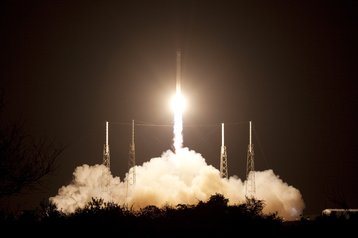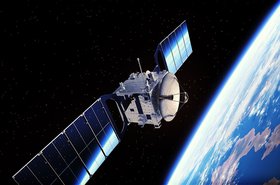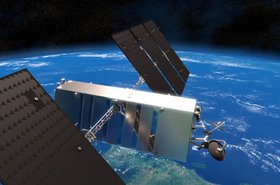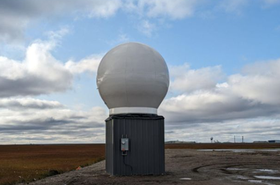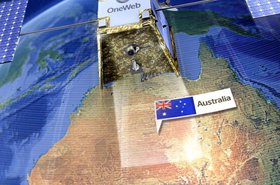SpaceX’s Starlink satellite service is responsible for the majority of near-misses in orbit. And while the majority of such events are between the company’s own satellites, Starlink machines fly within 1km of other companies’ satellites an average of 500 times per week.
In a series of tweets and an interview with Space.com, Hugh Lewis, the head of the Astronautics Research Group at the University of Southampton said we are seeing the “continuing (exponential) rise in the number of close passes” where satellites come within 1km of one another.
Looking at data from the Center for Space Standards & Innovation’s (CSSI) Socrates database for tracking near misses – also known as conjunction events – in orbit, Lewis noted the number of close calls had rocketed upwards in recent years.
In June 2019 Socrates reported ~1120 sub-1km conjunctions per week and ~28,000 conjunctions below 5km. At the end of July 2021, this had risen to around ~3500 sub-1 km conjunctions per week and ~60,000 conjunctions below 5 km.
Much of this increase is down to the Low Earth Orbit (LEO) constellations being launched by the new satellite firms. Satellites from Elon Musk’s company are now flying within 1km of other companies’ satellites around 500 times per week, and its own satellites even more.
"I have looked at the data going back to May 2019 when Starlink was first launched to understand the burden of these mega-constellations," Lewis told Space.com. "Since then, the number of encounters picked up by the Socrates database has more than doubled and now we are in a situation where Starlink accounts for half of all encounters."
Starlink accounts for around 60 percent of all conjunctions within 1 km or less – more than 14,000 times per week – and nearly 40 percent of all conjunctions with miss distances of 5 km or less. OneWeb accounts for 2.5 percent and ~3.5 percent of such events, respectively.
The vast majority of those conjunctions are between Starlink-owned satellites and the company claims the constellation has automated avoidance measures, but the company’s machines still account for ~13.5 percent of events within 1 km – equating to close to 500 per week for Starlink and 80 per week for OneWeb – and ~17 percent of all events within 5 km even if you exclude Starlink-on-Starlink events. The company was responsible for around 2 percent of sub-1km events in 2019.
When satellites traveling at thousands of miles per hour collide in orbit, it creates debris clouds that can impact other satellites in orbit for years. Even pieces measuring just 1-10cm across can destroy or severely damage small satellites.
In February 2009 the Russian military satellite Kosmos-2251 collided with the Iridium 33 communications satellite. Impacting at speeds of 26,000 miles per hour, the two satellites were destroyed, creating a cloud of 1,800 large pieces of space debris, with much of which is still being tracked in orbit today.
Satellite avoidance measures are largely manual operations, and the systems and organizations dedicated to the detection and alerting of potential conjunction events have no oversight authority over satellite operators. Once alerts have been sent it must be left up to the parties involved in each event to make contact and arrange their own avoidance measures.
With the number of satellites in orbit continuing to grow rapidly – more than 1,000 of the 3,000 operational satellites in orbit in 2020 were launched the same year – and conjunction events becoming a regular occurrence, more automation and oversight are needed to ensure orbit remains usable.
Earlier this year astrophysicist Jonathan McDowell of the Harvard-Smithsonian Center for Astrophysics told DCD he thinks changes will need to be made to make space more sustainable.
“With appropriate cooperation or regulation, you could have maybe several times as much activity as we do now if you're really careful about it,” he said. “You can't have 100 times as much activity and you can't do it in an unregulated environment.”

